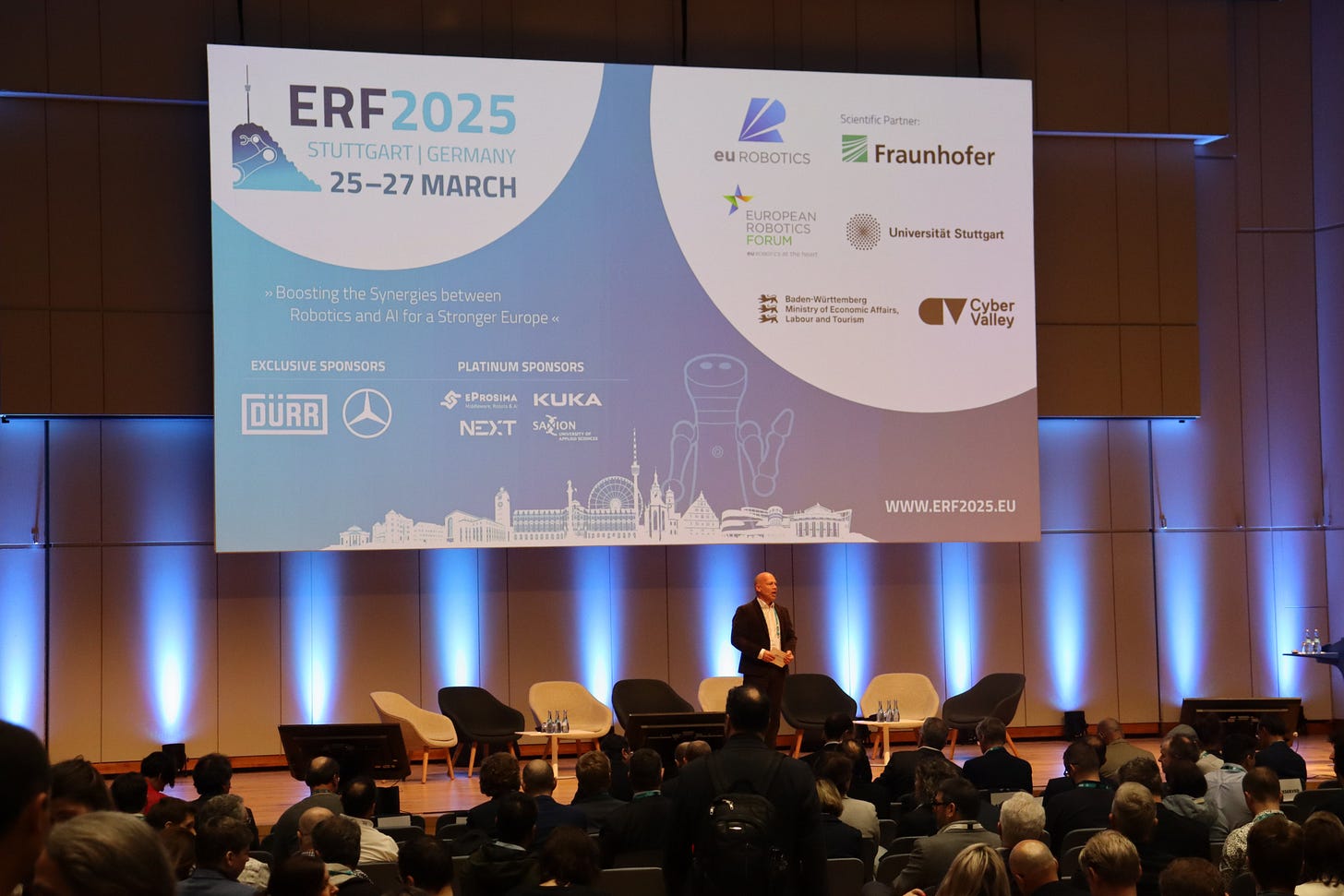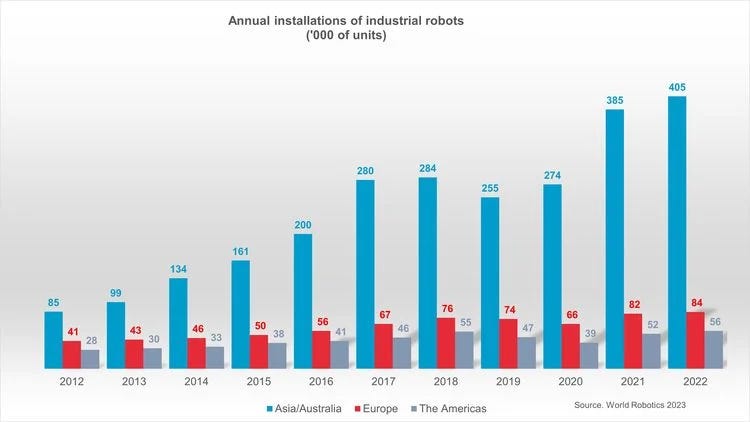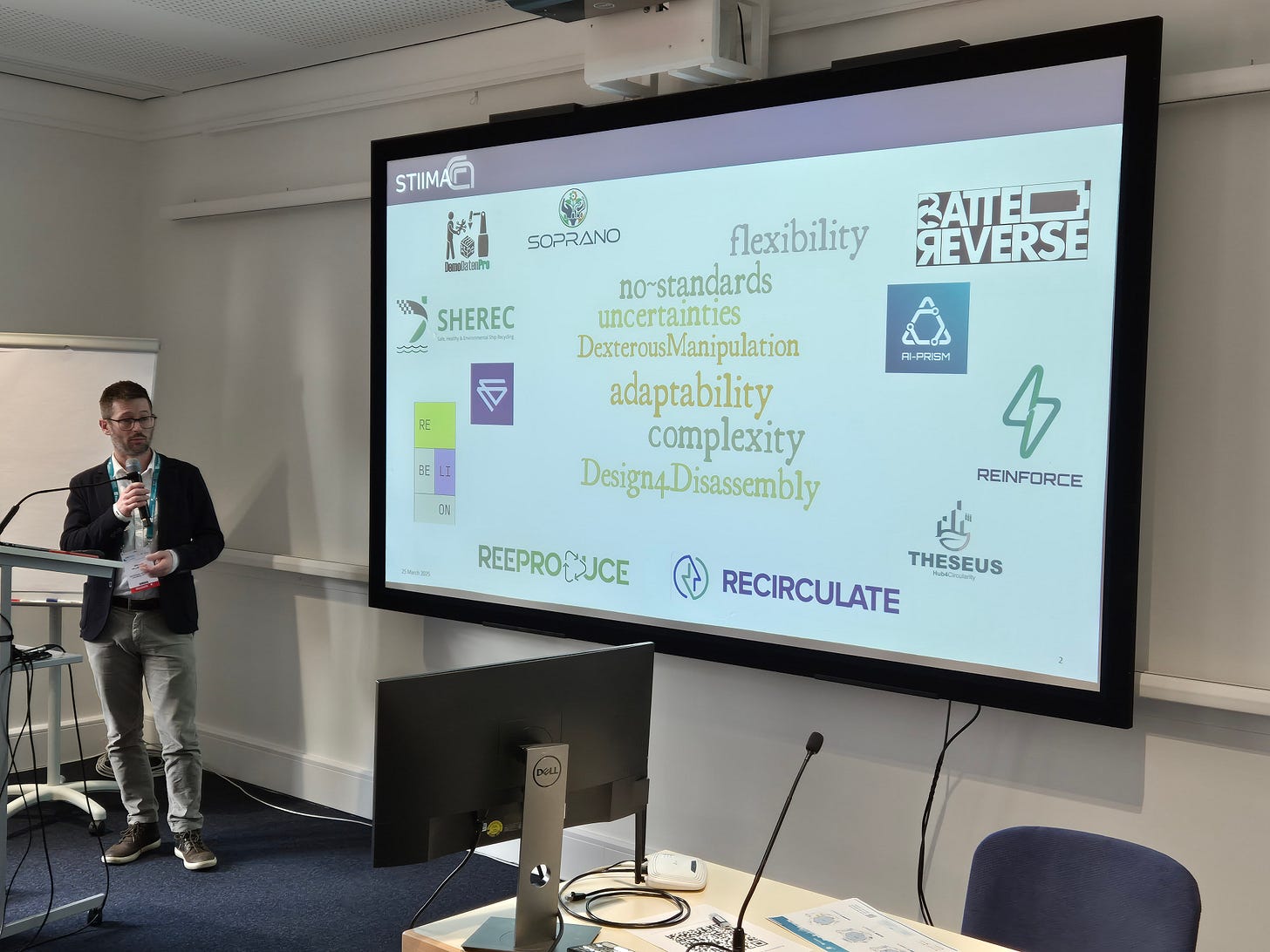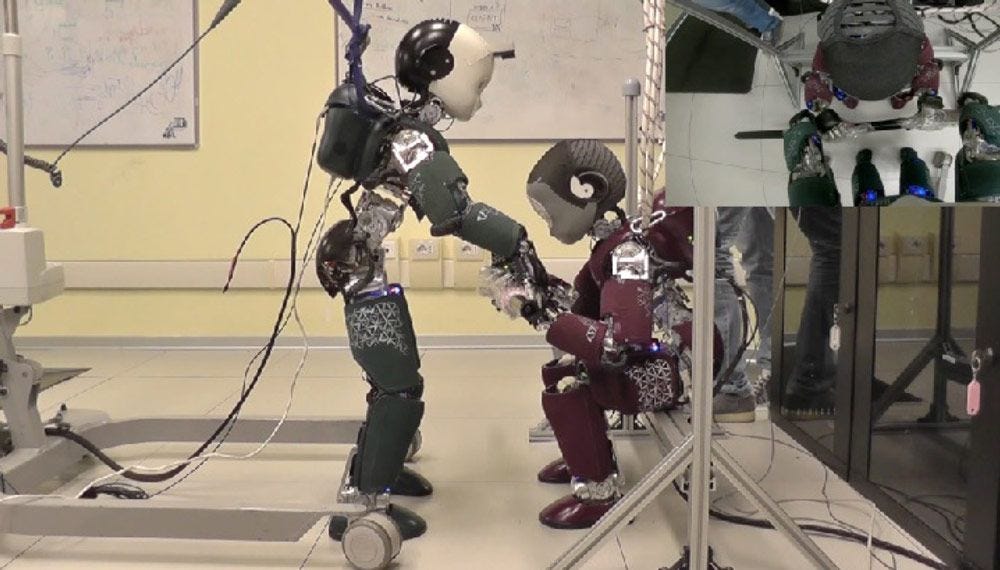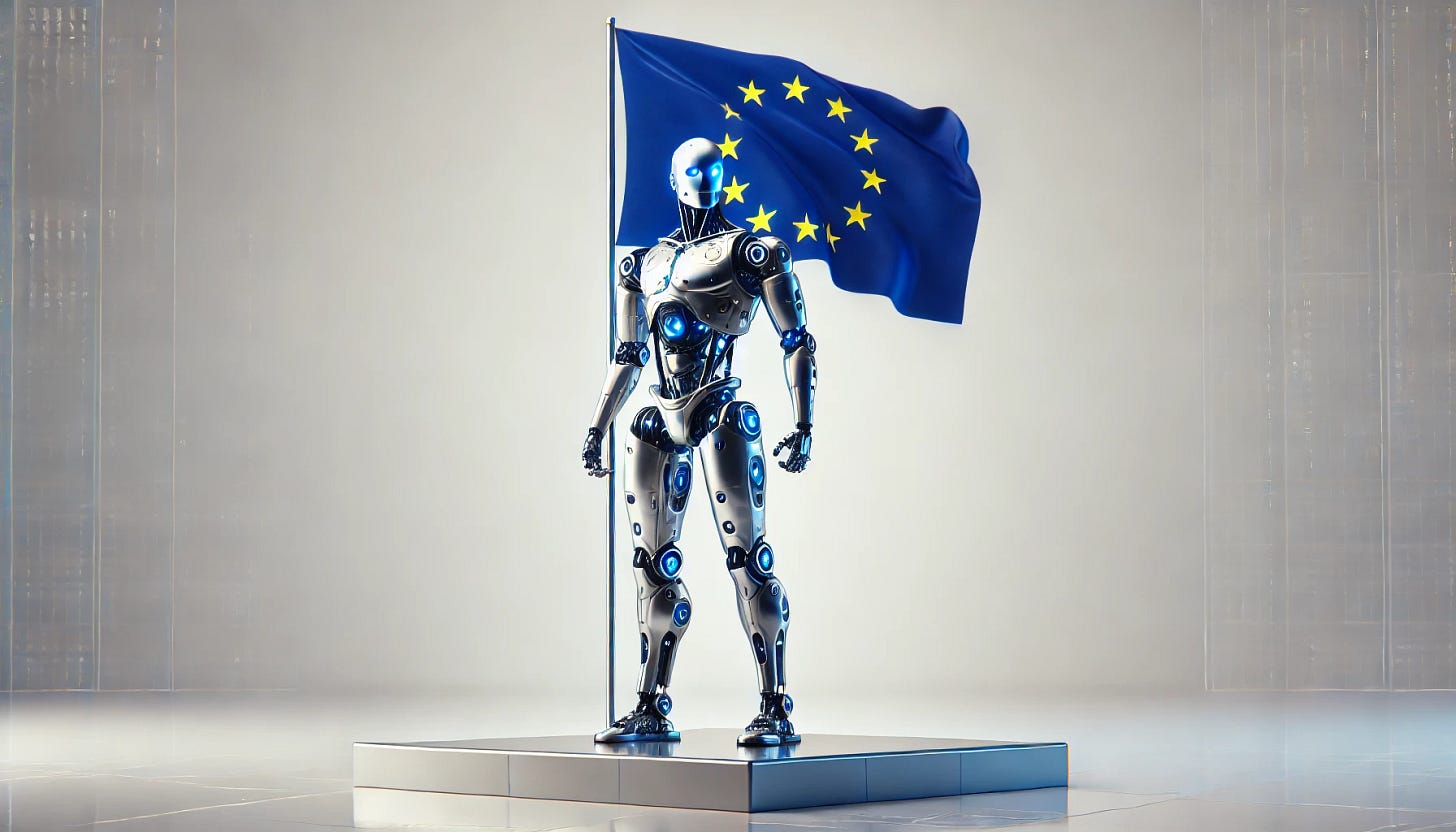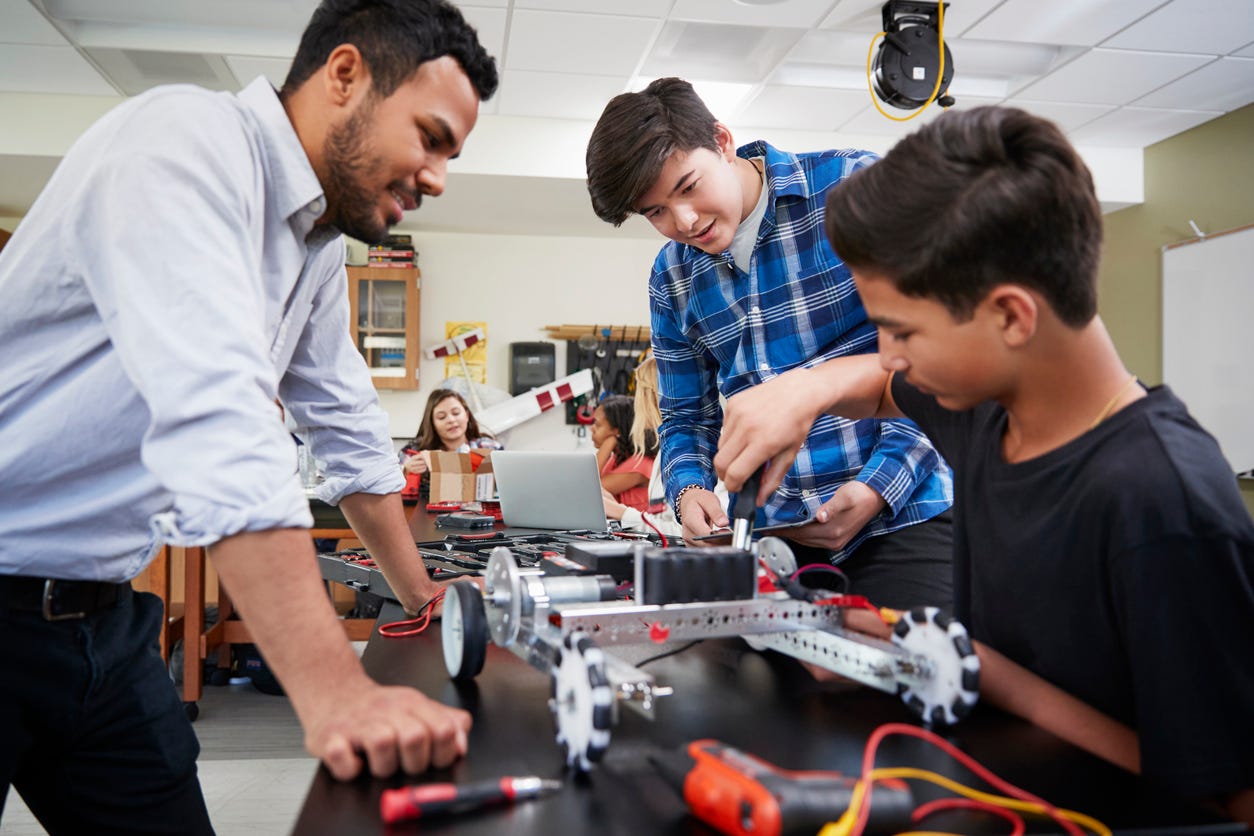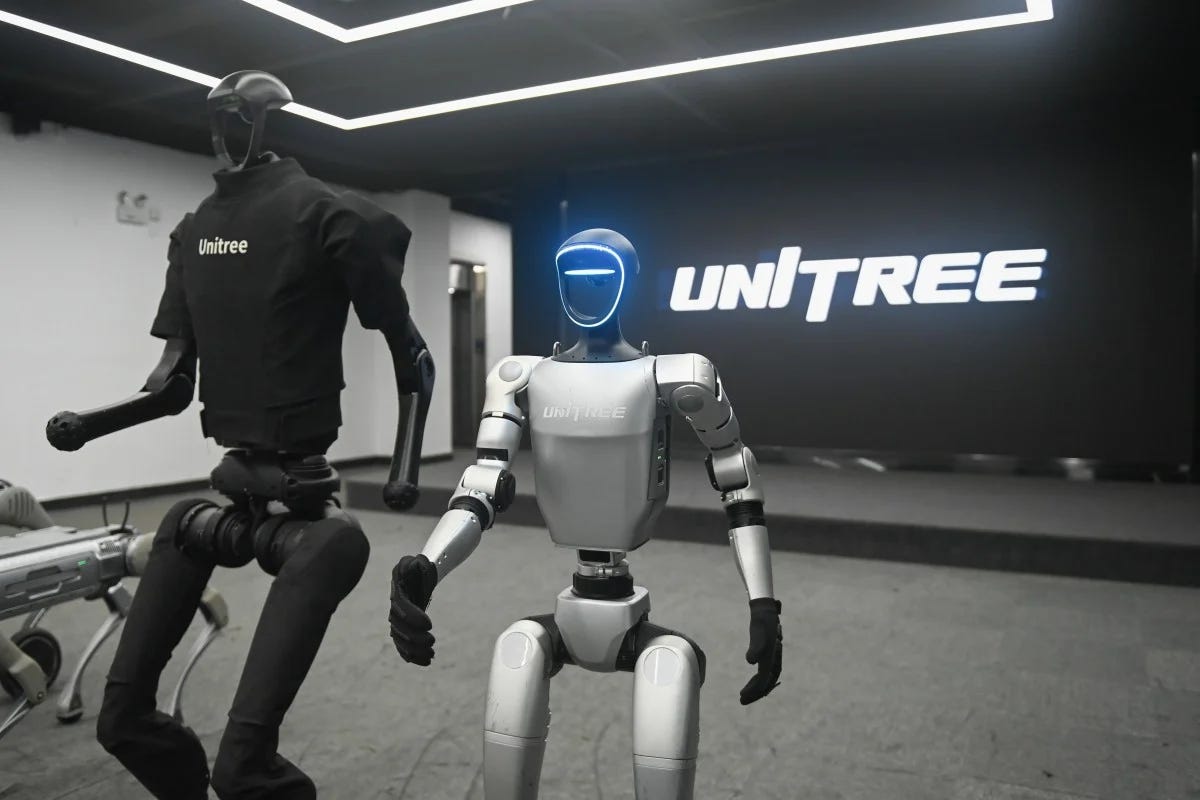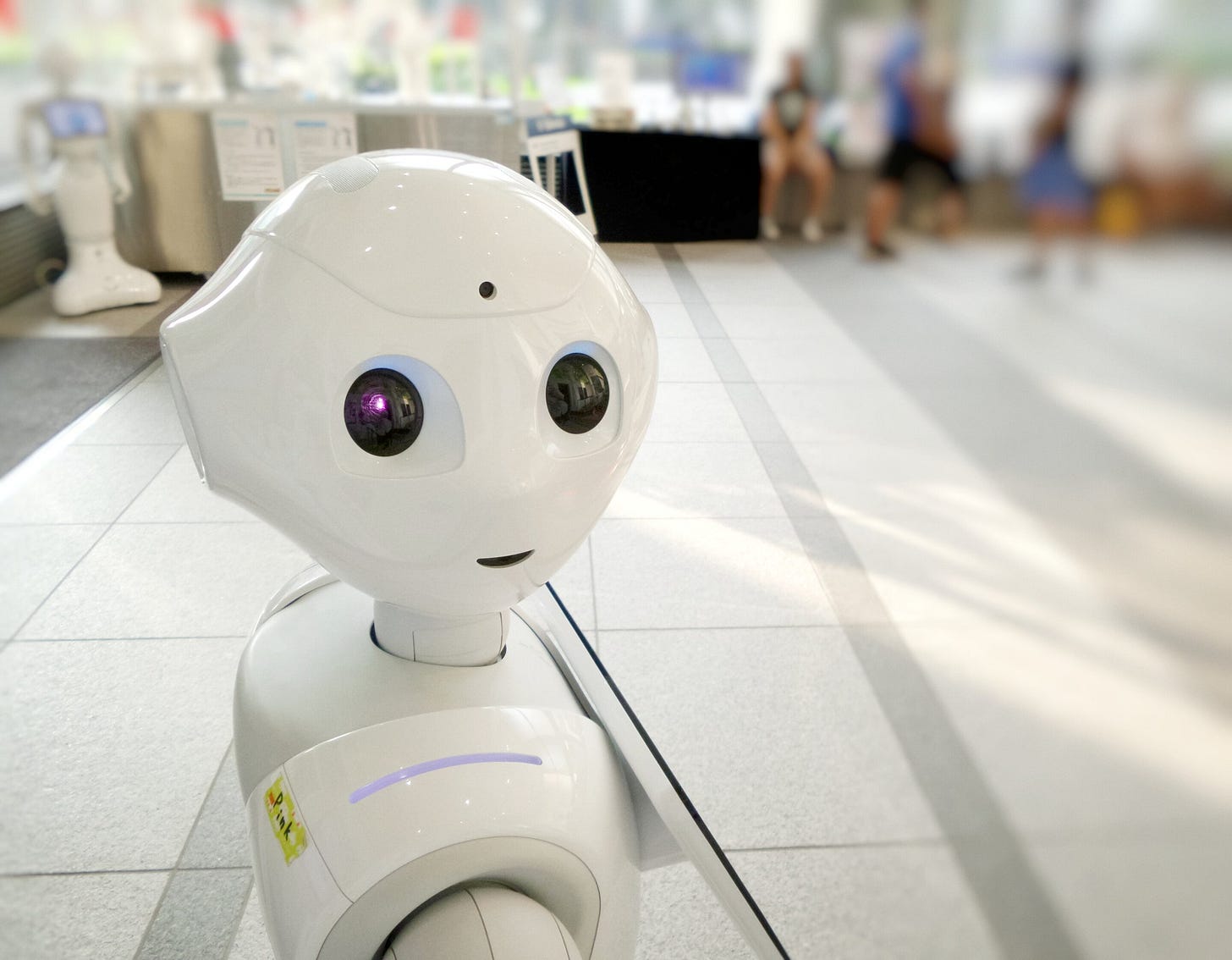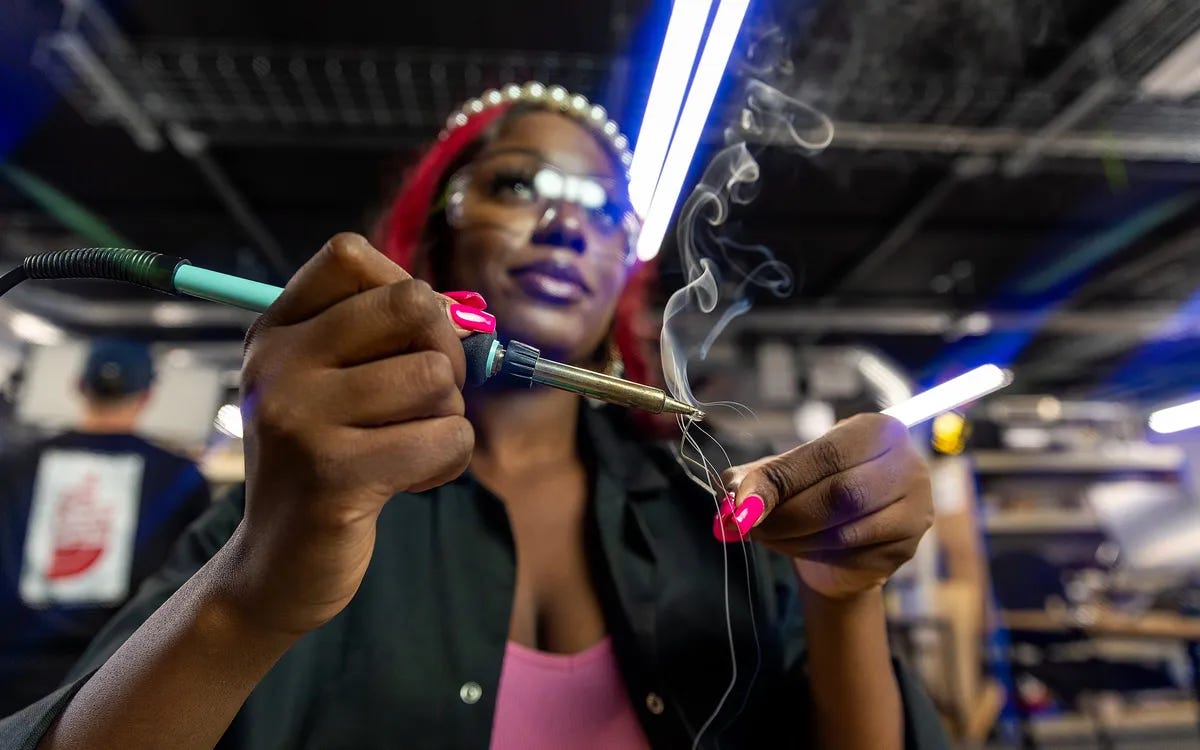Robotics at a Crossroads: What Europe Must Do Next
After an inspiring week at the European Robotics Forum 2025, it’s clear that Europe has the talent, institutions, and ambition to lead the future of robotics—but only if it acts boldly and strategical
Aaron’s Thoughts On The Week
“The best way to predict the future is to invent it.” – Alan Kay
I joined over 1,500 other roboticists at this year’s European Robotics Forum (#erf2025) in Stuttgart, Germany this week. I attended numerous talks and panels, networked extensively, and had a great time overall. So what did I learn? A lot.
Europe has long been a significant player in the global robotics industry, holding approximately 32% of the market share. Countries like Germany, Italy, and France have led the way, driving innovation and adoption across various sectors. However, as the global landscape rapidly changes both politically and technologically, Europe faces opportunities and challenges that require strategic action to maintain and enhance its position in robotics.
Here are just some of my takeaways from this week regarding Europe's current status, its aspirations on the robotics journey, and some of the proposals I heard to help get them there.
Current Strengths in European Robotics
The European robotics market has demonstrated robust growth. In 2022, EU member states installed nearly 72,000 industrial robots, marking a 6% increase from the previous year . Germany led with approximately 26,000 units, underscoring its pivotal role in the continent's robotics sector. This upward trend is projected to continue, with the market expected to reach $18.27 billion by 2032, growing at a compound annual growth rate (CAGR) of 15.7% .
Europe’s strengths lie in its diverse industrial base, strong research institutions, and a collaborative approach to innovation. The continent boasts some of the world’s most respected robotics research communities, many of which work across borders to advance the field.
Initiatives like the European Robotics Research Network (EURON) and euRobotics (the host for #ERF2025) have played a key role in connecting nearly 200 research centers, promoting collaboration between academia and industry. These networks help align research agendas, share resources, and support the development of cutting-edge robotics technologies.
Notable institutions that I heard from this week include (but not limited to):
DFKI (German Research Center for Artificial Intelligence) – Known for its work in human-robot interaction, industrial automation, and AI-powered robotics.
ETH Zurich (Switzerland) – A global leader in robot locomotion, aerial robotics, and autonomous systems.
Italian Institute of Technology (IIT) – Home to the iCub humanoid robot, IIT is pioneering soft robotics and neuro-inspired systems.
TU Delft (Netherlands) – Renowned for innovative work in robotic mobility and bio-inspired design.
INRIA (France) – Focused on algorithms, machine learning, and robotics software systems.
Collaborative EU-funded projects like Horizon Europe, SPARC, and DIH-HERO have further enabled these institutions to share breakthroughs, support startups, and scale innovations.
This thriving ecosystem positions Europe as a powerhouse in foundational robotics research. The challenge now is translating this research excellence into globally competitive commercialization at scale.
Areas of Concern
Despite these strengths, several challenges that hinder the full potential of Europe's robotics industry were brought up over and over again:
Global Competition: Nations like China have rapidly advanced in robotics adoption. In 2024, China surpassed Germany in industrial robot density, signaling intensified competition.
Fragmented Market: The European market is still fragmentation even though the EU has tried to change that. There are still varying regulations and standards across member states, which impedes scalability and integration of robotic solutions.
Investment Gaps: While venture capital investment in European defense and security tech reached a record $5.2 billion in 2024, broader investment in robotics startups still lags behind counterparts in the U.S. and Asia. Some of the attendees were very vocal about this, citing it as a growing issue.
Regulatory Hurdles: Complex regulations continue to slow down innovation and deployment of robotic technologies, affecting time-to-market for new solutions. Many robot firms cited this prior to departing for North America.
Strategic Recommendations for the EU
To address these challenges and propel the robotics industry forward, it seemed that those in attendance stated the EU should consider the following actions:
Develop a Cohesive Robotics Strategy: The European Commission plans to release an EU-wide strategy to harmonize efforts across member states, ensuring synergy in AI-powered robotics adoption . This strategy should focus on standardization, interoperability, and shared resources.
Increase Funding and Investment: Enhancing funding mechanisms for robotics research and startups is crucial. Initiatives like the NATO Innovation Fund, which supports military and dual-use tech startups, exemplify efforts to bridge the financial gap with global competitors. There simply needs to be more done in this field or some robot firms will look elsewhere.
Foster Public-Private Partnerships: Collaboration between governments, academia, and industry can drive innovation and commercialization of robotic technologies. The "Robotics Action Plan for Europe" advocates for such partnerships to boost competitiveness and address demographic and environmental challenges.
Streamline Regulations: Simplifying regulatory frameworks can accelerate the deployment of robotic solutions. France's push to reduce EU red tape and delay new regulations highlights the need for a balance between oversight and innovation.
Invest in Workforce Development: As robotics and AI evolve, reskilling the workforce is essential. Educational programs should align with industry needs to prepare individuals for emerging roles in robotics.
Promote Ethical AI and Robotics: Ensuring that robotic systems are developed and deployed ethically will build public trust and acceptance. The EU's focus on trustworthy and human-centered AI should extend to robotics policies.
So What’s Next?
Europe stands at a pivotal juncture in the robotics industry—one defined not just by promise, but by urgency. The foundations are solid: world-class research institutions, a strong industrial base, a history of cross-border collaboration, and an ethical framework grounded in human-centric values. These are the ingredients of leadership. But leadership must be maintained, not assumed.
To stay ahead, Europe must move decisively. Fragmented national strategies must give way to a cohesive EU-wide vision. Regulations should enable innovation rather than stall it. Funding—both public and private—must match the ambition seen in Asia and North America. Startups and scale-ups need support not only to survive, but to thrive globally.
Workforce development is equally critical. As robotics and AI reshape industries, Europe must ensure its people are equipped with the skills to lead in this new era. Inclusivity, diversity, and upskilling must be embedded into every strategic plan.
The good news? Europe has done it before. Initiatives like Horizon Europe, the Digital Europe Programme, and SPARC show that when the EU sets a bold vision and follows through, the results speak for themselves.
Now is the time to double down. With the right alignment of policy, investment, and talent, Europe can not only remain a leader in robotics—it can shape the future of the industry in a way that reflects its values: sustainable, inclusive, and human-centered.
The opportunity is here. The path is clear. What’s needed now is the will to act.
Robot News Of The Week
A3 Releases Vision for a U.S. National Robotics Strategy
The Association for Advancing Automation (A3) has proposed a National Robotics Strategy to ensure U.S. leadership in robotics and physical AI. Key recommendations include creating a central robotics office, a Robotics Commission, tax incentives, increased workforce training, academic funding, and modernized industry standards. A3 urges Congress to act now, highlighting robotics as essential for economic growth, innovation, and national security. With rapid AI integration and looming labor shortages, A3 stresses the urgency of coordinated national action to stay globally competitive in automation and robotics-driven industries.
Unitree won't release humanoid household robots for now
Chinese robotics company Unitree is leading in humanoid robot development but has no immediate plans to release household robots. Founder Wang Xingxing says the high safety standards for home use make it a long-term goal, unlikely to happen within the next 2–3 years, according to the South China Morning Post.
For now, Unitree is prioritizing industrial applications, focusing on advanced full-body motion control with its H1 and G1 robots. The G1, known for its dexterous hands and compact 1.32m size, is being prepped for mass production and designed for use in manufacturing. A larger version of the G1 is aimed at more demanding industrial tasks.
In short: Unitree is betting big on humanoids for the factory floor—not your living room (yet).
China to invest $137B in robotics and high-tech industries, reports IFR
China is accelerating its robotics push with a new state-backed VC fund targeting ¥1 trillion ($137.8B) over 20 years, focusing on AI, automation, and humanoid robots. Backed by national strategy, China now accounts for over half of global industrial robot demand and surpassed Germany and Japan in robot density in 2023. Domestic manufacturers now supply 54% of its market. The government sees humanoids as frontier tech and key to future growth, with major players like Xpeng Motors pledging massive investments. Experts say this strategy poses global implications, urging Europe and the U.S. to act fast or risk falling behind.
Robot Research In The News
Scientists develop dog-inspired robot that runs without motors
Researchers from TU Delft and EPFL have developed a quadruped robot that mimics a dog’s movement without using motors. Published in Nature Machine Intelligence, this design employs springs, cables, and passive mechanics, drawing inspiration from natural systems such as fish drifting upstream after death.
By analyzing actual dog motion through machine learning, the team created a robot that walks and adjusts its speed on a treadmill, powered solely by the treadmill itself. Minimal motors are incorporated for obstacle navigation. The goal is to create smarter, energy-efficient robots that combine mechanical intelligence with adaptive behavior.
Study shows people in Japan treat robots and AI agents more respectfully than people in Western societies
As self-driving cars become common, how we interact with them—especially in shared spaces—matters. A study by LMU Munich and Waseda University found that people are more likely to exploit cooperative robots than humans, particularly in the U.S. and Europe. In Japan, however, people show similar respect and guilt toward both humans and machines. These cultural differences may influence how quickly automated vehicles are adopted in different regions. "Cutting off a robot doesn’t hurt its feelings," says Dr. Jurgis Karpus—but it might slow down progress if we treat machines unfairly.
Robot Workforce Story Of The Week
5 Ways Women Can Advance Their Careers in Tech
Navigating tech as a woman can be isolating, but it’s possible to thrive and lead. Despite women making up just 35% of the tech workforce and 25% of leadership, you can take charge with five key strategies:
Negotiate with confidence—know your worth and market value.
Own your success—track accomplishments and reject the idea that promotions are gender-based.
Ask for opportunities—show initiative and connect strengths to business needs.
Lead authentically—embrace empathy and emotional intelligence.
See yourself as a leader—lead by mindset, not title.
Empowered women shape inclusive tech.
Robot Video Of The Week
At GTC 2025, NVIDIA CEO Jensen Huang unveiled Blue — a next-gen, AI-powered robot created in partnership with Disney Research and Google DeepMind. In a brief but captivating moment, Jensen interacted with Blue on stage, offering a glimpse into NVIDIA’s bold vision for the future of AI and robotics. While full details remain under wraps, this collaboration signals something big on the horizon.
Upcoming Robot Events
Apr. 23-26 RoboSoft (Lausanne, Switzerland)
Apr. 30-May 1 Robotics Summit (Boston, MA)
May 12-15 Automate (Detroit, MI)
May 17-23 ICRA 2025 (Atlanta, GA)
May 18-21 Intl. Electric Machines and Drives Conference (Houston, TX)
May 20-21 Robotics & Automation Conference (Tel Aviv)
May 29-30 Humanoid Summit - London
June 30-July 2 International Conference on Ubiquitous Robots (College Station, TX)
Aug. 18-22 Intl. Conference on Automation Science & Engineering (Anaheim, CA)
Oct. 6-10 Intl. Conference on Advanced Manufacturing (Las Vegas, NV)
Oct. 15-16 RoboBusiness (Santa Clara, CA)
Oct. 19-25 IEEE IROS (Hangzhou, China)
Nov. 3-5 Intl. Robot Safety Conference (Houston, TX)
Dec. 11-12 Humanoid Summit (Silicon Valley TBA)


